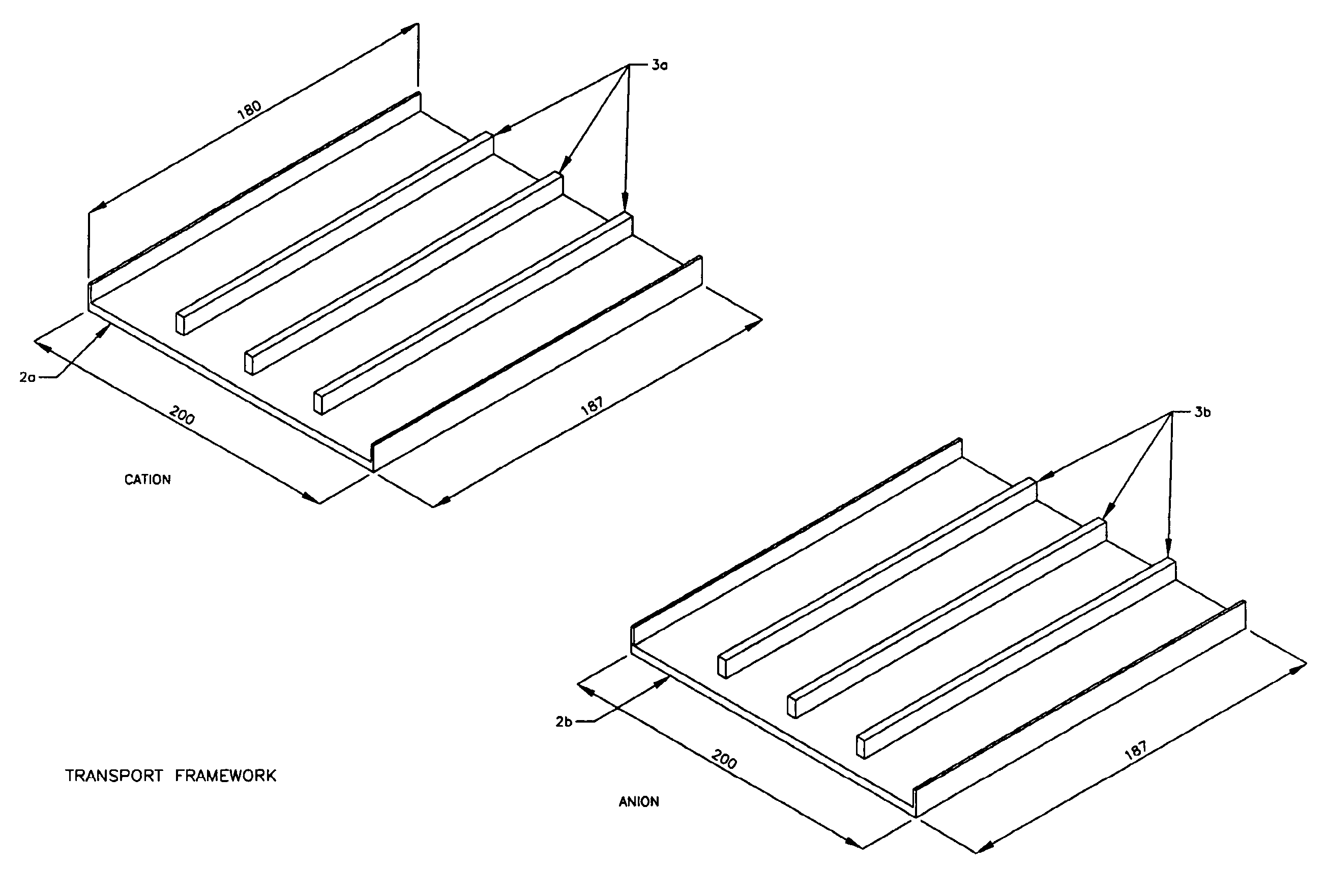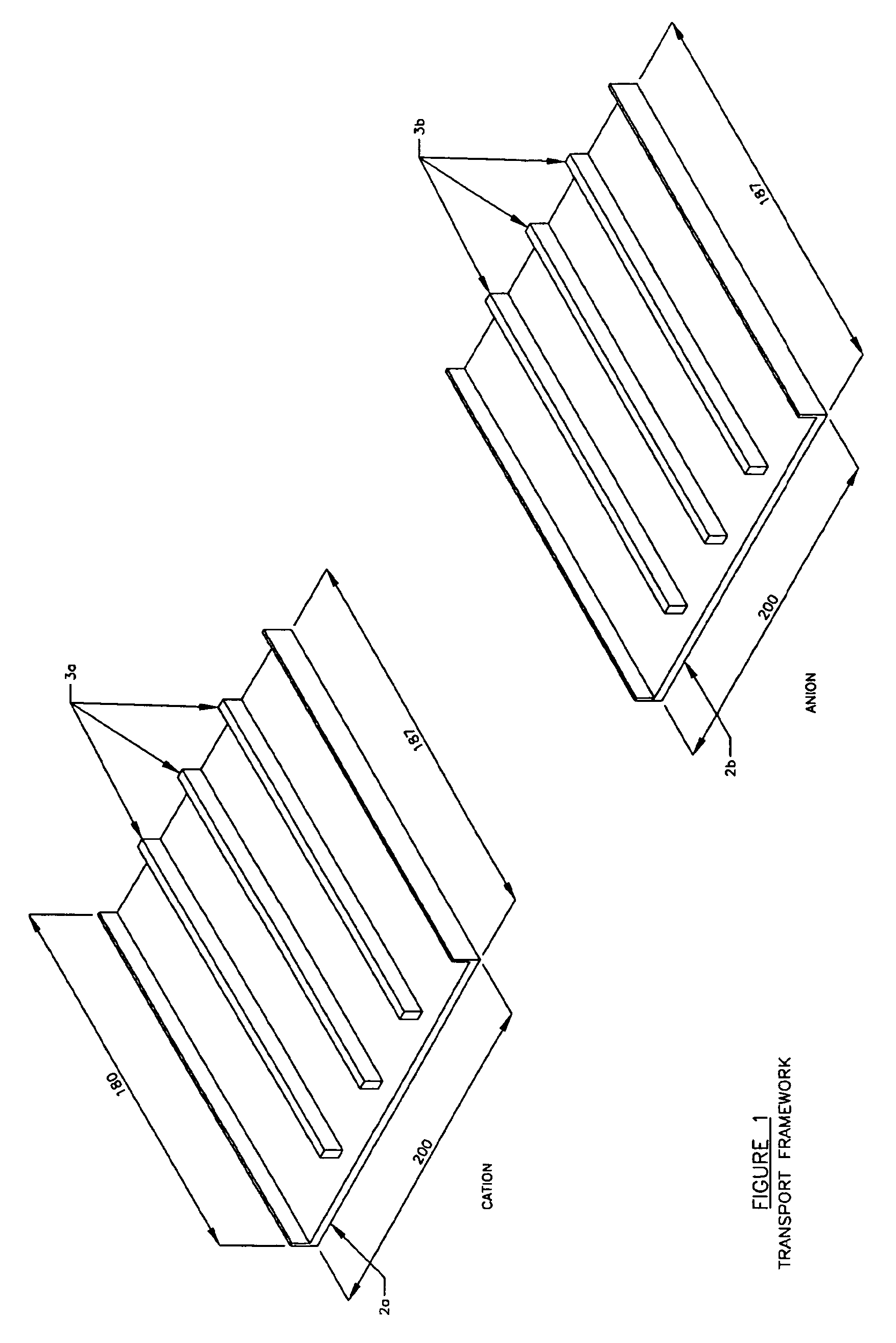Method for preparing an ion exchange media
a technology of ion exchange media and composite materials, applied in water/sewage treatment, separation processes, filtration separation, etc., can solve the problems of deteriorating quality that needs flow reduction, insatisfactory flux, and thickness limitation, and achieve the effect of eliminating water bypassing and soft textur
- Summary
- Abstract
- Description
- Claims
- Application Information
AI Technical Summary
Benefits of technology
Problems solved by technology
Method used
Image
Examples
examples
[0036]The examples detailed here explain preparation of Flow path domains, blocks or tablets and Transport framework along with flow dividers. These components have been assembled together into a dilute compartment and several of these have been used to create an electro deionization assembly. Various experiments have been carried out and experimental data has been plotted in graphs.
Method of preparation of media and details of various experiments are as follows—
experiment 1
Preparation of the Framework and Tablets
One set of die is made of the size 200×187 mm of different thickness as required for the selected size of the dilute compartment. The media was made here for dilute compartment thickness of 11.3 mm.
[0037]Anion resin in Cl form and cation in Na form resin separately dried through air or vacuum dried to reduce moisture content between 10 to 20%.
[0038]As shown in FIG. 1, separate anion resin bed was made by 127 grams on 100% dry basis and blended with suitable binding agent in the range of 1% to 10% (preferably 5 to 7%). The dough was prepared filled in the die and pressed on drying. Similarly separate cation resin bed was by 169 gms of material on 100% dry basis with suitable binding agent in the range of 0.5 to 5%, (preferably between 3 to 5%). The ratio of anion and cation in one bed was kept in ratio of 35% cation and 65% anion and accordingly in the separate anion bed cation blocks that have to be cut and separated out. Under this bed exampl...
experiment 2
[0052]Thickness of the dilute compartment used was 10.7 mm. Anion resin in Cl form and cation in Na form resin separately air dried to reduce moisture content between 10 to 20%. Separate anion resin bed is made by 125 grams on 100% dry basis and blended with suitable binding agent in the range of 1% to 10% preferably 5 to 7%. The dough is prepared filled in the die and pressed on drying. Similarly separate cation resin bed is by 165 gms of material on 100% dry basis with suitable binding agent in the range of 0.5 to 5% preferably between 3 to 5%. The ratio of anion and cation in one bed was kept the same as experiment-1. The anion and cation blocks were also of the same size. Intermediate separator and the framework preparation were similar as in experiment-1 but adjusted to suit the thickness of dilute compartment.
[0053]All the six beds at this time were having transport framework and flow path domains when the assembly of the stack was done. The stack operated with feed condition ...
PUM
| Property | Measurement | Unit |
|---|---|---|
| size | aaaaa | aaaaa |
| size | aaaaa | aaaaa |
| thickness | aaaaa | aaaaa |
Abstract
Description
Claims
Application Information
 Login to View More
Login to View More - R&D
- Intellectual Property
- Life Sciences
- Materials
- Tech Scout
- Unparalleled Data Quality
- Higher Quality Content
- 60% Fewer Hallucinations
Browse by: Latest US Patents, China's latest patents, Technical Efficacy Thesaurus, Application Domain, Technology Topic, Popular Technical Reports.
© 2025 PatSnap. All rights reserved.Legal|Privacy policy|Modern Slavery Act Transparency Statement|Sitemap|About US| Contact US: help@patsnap.com



